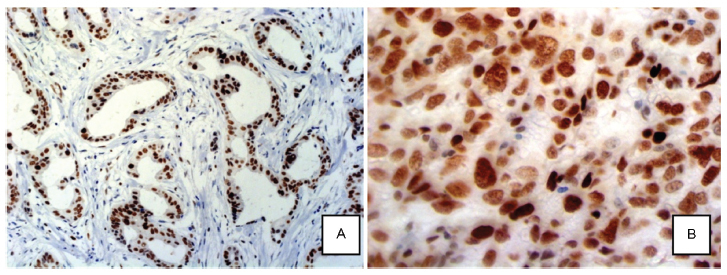-
Case Report
Mature Cystic Teratoma of Ovary with Abnormally High Levels of Ca19-9: A Case Report
Revista Brasileira de Ginecologia e Obstetrícia. 2016;38(7):365-367
07-01-2016
Summary
Case ReportMature Cystic Teratoma of Ovary with Abnormally High Levels of Ca19-9: A Case Report
Revista Brasileira de Ginecologia e Obstetrícia. 2016;38(7):365-367
07-01-2016Views136See moreAbstract
Mature cystic teratomas, or dermoid tumors, are the most common benign ovarian neoplasms in young women. Malignant transformation is rare, and occurs in less than 2% of the cases. The heterogeneous histological composition of these tumors may be responsible for the occasional elevation of various tumor markers, such as Ca19-9 and Ca125. We describe one case of mature cystic teratoma in a 50-year old woman with the second highest level of Ca19-9 (8922.76 UI/mL) described in the literature. We concluded that abnormal levels of Ca19-9 are not necessarily associated with ovarian malignancy, and may lead to unnecessary medical intervention and patient anxiety. Therefore, the clinical features, imaging studies and antigen testing should be interpreted carefully, and should not limit the surgical approach.

-
Original Article
EZH2 Protein Expression and Tumor Response to Neoadjuvant Chemotherapy in Locally Advanced Breast Cancer
Revista Brasileira de Ginecologia e Obstetrícia. 2016;38(6):280-286
06-01-2016
Summary
Original ArticleEZH2 Protein Expression and Tumor Response to Neoadjuvant Chemotherapy in Locally Advanced Breast Cancer
Revista Brasileira de Ginecologia e Obstetrícia. 2016;38(6):280-286
06-01-2016Views163See moreAbstract
Introduction
Neoadjuvant chemotherapy (NAC) is the standard treatment for locally advanced breast cancer. However, some tumors will not respond to this treatment due to histological and molecular features. The protein EZH2 (enhancer of zest homolog 2) is a histone methyltransferase that is correlated with poorly differentiated breast carcinomas and aggressive tumor behavior.
Purpose
The present study evaluated the association between EZH2 expression and response to NAC, and its correlation with HER2 overexpression, estrogen and progesterone receptors (ER, PR) and Ki-67 proliferation index.
Methods
A total of 60 patients with locally advanced breast cancer treated with NAC were selected for this study. Twenty-three paraffin blocks had not enough material for tissue resection, and were not evaluated. A tissue microarray based in immunohistochemistry (IHC) analysis of EZH2 was performed for the remaining 37 specimens. Patients were divided into two groups based on response to NAC.
Results
EZH2 expression was significantly associated with markers of poor prognosis such as ER negativity (p = 0.001), PR negativity (p = 0.042) and high Ki-67 proliferation index (p = 0.002). High EZH2 expression was not correlated with the response to NAC.
Conclusions
Our data suggested that EZH2 protein expression may not correlate with the clinical response to NAC. Other studies with more patients are needed to confirm this observation.

-
Relato de Caso
Pelvic Tuberculosis Simulating Ovarian Tumor
Revista Brasileira de Ginecologia e Obstetrícia. 2000;22(8):525-528
07-11-2000
Summary
Relato de CasoPelvic Tuberculosis Simulating Ovarian Tumor
Revista Brasileira de Ginecologia e Obstetrícia. 2000;22(8):525-528
07-11-2000DOI 10.1590/S0100-72032000000800009
Views75See morePelvic tuberculosis is an extrapulmonary form of tuberculosis with increasing incidence in the western world. Clinical and laboratory findings of this disease are often unspecific and mimic a variety of other disorders, including gynecologic malignant tumors. The authors report a case of a 53-year-old woman with pelvic tuberculosis and associated abdominal tuberculous peritonitis. Laboratory investigation included laparoscopy, CA-125 levels and tuberculin test, among others. Discussion on the clinicopathological aspects and diagnostic methods used to elucidate this case is presented.


